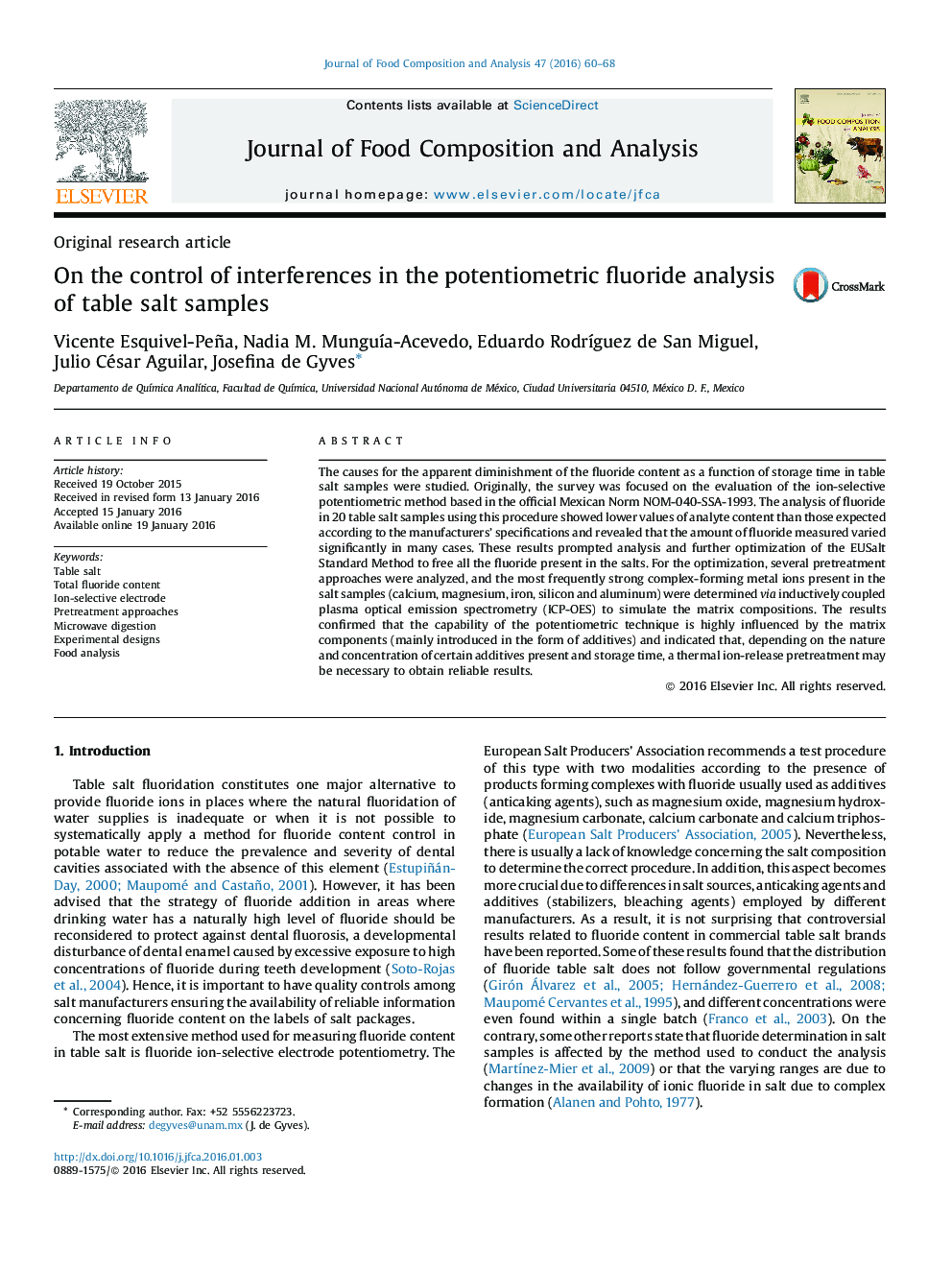| Article ID | Journal | Published Year | Pages | File Type |
|---|---|---|---|---|
| 7620247 | Journal of Food Composition and Analysis | 2016 | 9 Pages |
Abstract
The causes for the apparent diminishment of the fluoride content as a function of storage time in table salt samples were studied. Originally, the survey was focused on the evaluation of the ion-selective potentiometric method based in the official Mexican Norm NOM-040-SSA-1993. The analysis of fluoride in 20 table salt samples using this procedure showed lower values of analyte content than those expected according to the manufacturers' specifications and revealed that the amount of fluoride measured varied significantly in many cases. These results prompted analysis and further optimization of the EUSalt Standard Method to free all the fluoride present in the salts. For the optimization, several pretreatment approaches were analyzed, and the most frequently strong complex-forming metal ions present in the salt samples (calcium, magnesium, iron, silicon and aluminum) were determined via inductively coupled plasma optical emission spectrometry (ICP-OES) to simulate the matrix compositions. The results confirmed that the capability of the potentiometric technique is highly influenced by the matrix components (mainly introduced in the form of additives) and indicated that, depending on the nature and concentration of certain additives present and storage time, a thermal ion-release pretreatment may be necessary to obtain reliable results.
Related Topics
Physical Sciences and Engineering
Chemistry
Analytical Chemistry
Authors
Vicente Esquivel-Peña, Nadia M. MunguÃa-Acevedo, Eduardo RodrÃguez de San Miguel, Julio César Aguilar, Josefina de Gyves,
